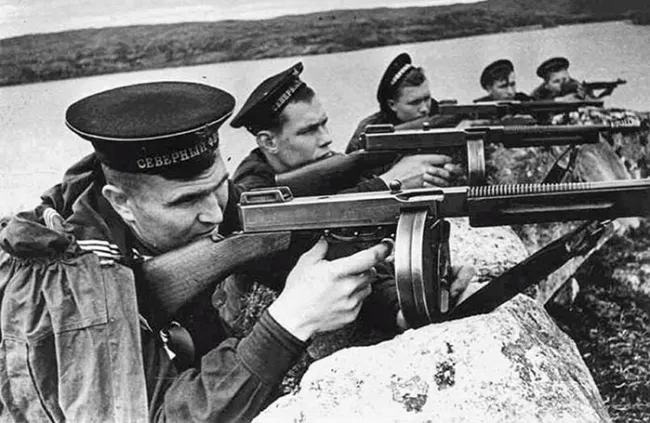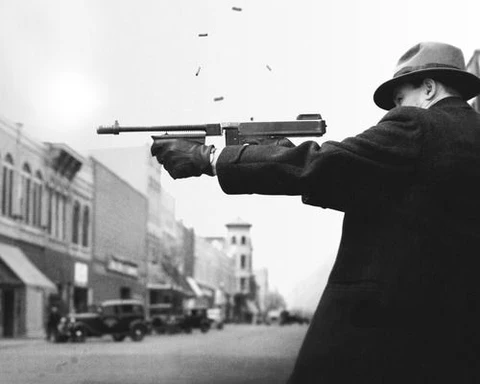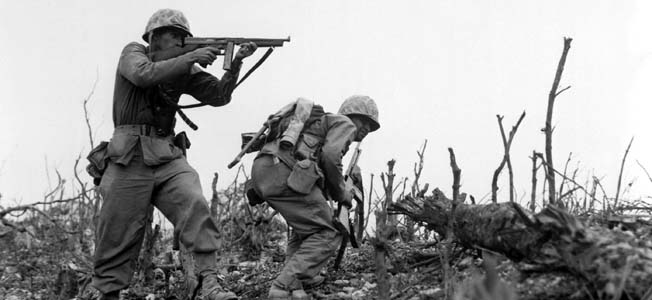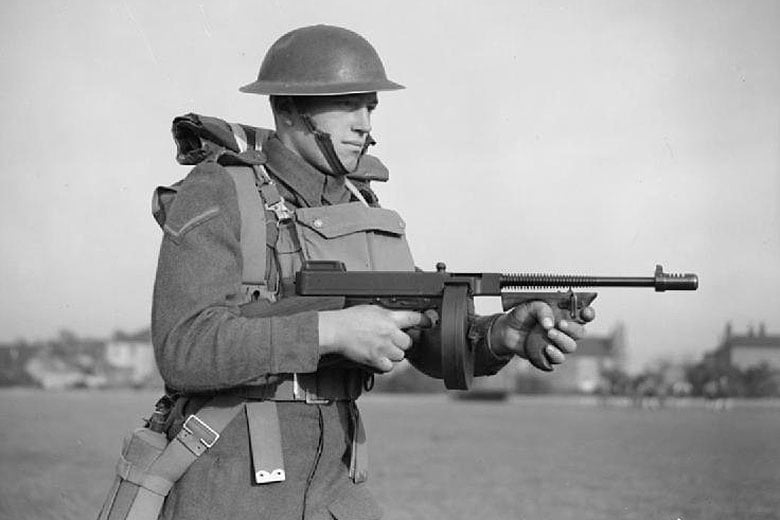In 1921, a sleek and powerful new firearm hit the American market. The Thompson submachine gun nicknamed the “Tommy Gun” was first sold for $200, a hefty price at the time. It was designed by General John T. Thompson as a trench-clearing weapon for World War I. However, the war ended before it could be deployed, and the gun found itself entering civilian markets instead.
Marketed originally to law enforcement and military buyers, the Thompson’s compact size, high rate of fire, and magazine capacity made it unlike anything else available. But it wasn’t long before it drew the attention of a very different group organized crime.

The Gangster Era: Infamy in the Streets
Throughout the 1920s and 1930s, America’s Prohibition era gave rise to bootlegging empires, bank robbers, and street warfare between criminal gangs. The Thompson became a favored weapon for its intimidating presence and devastating power. With its drum magazine and rapid automatic fire, it appeared in the hands of figures like Al Capone, John Dillinger, and Baby Face Nelson.

Its role in infamous crimes, including the 1929 St. Valentine’s Day Massacre, cemented the Thompson’s reputation as the gun of choice for the underworld. Media coverage and Hollywood films only amplified this image. The Tommy Gun wasn’t just a weapon it became a cultural icon of the lawless era.
Law enforcement, too, adopted the weapon to fight back against increasingly armed criminals. Agencies like the FBI used Thompsons in raids and standoffs, often mirroring the very tactics of the gangsters they pursued.
Video:
Restoring a WW2 Thompson SMG (for real)
A New Role in World War II
While the Thompson’s early years were shaped by domestic violence and organized crime, its true legacy was forged overseas. When World War II erupted, the U.S. military rediscovered the Thompson and quickly recognized its potential on the battlefield.
The gun’s reliability in harsh conditions, along with its ability to deliver high volumes of fire at close range, made it invaluable in trench warfare, jungle combat, and urban fighting. Soldiers praised it for its effectiveness in clearing bunkers and buildings. It was particularly favored by paratroopers, tank crews, and officers who needed a lightweight yet powerful firearm.
By the end of the war, over 1.5 million Thompsons had been produced. They were used not only by American forces but also by Allied troops around the world. In the hands of soldiers from Britain, Canada, and even the Soviet Union, the Thompson became a symbol of Allied resistance and strength.

Post-War Legacy and Collectible Status
After the war, newer submachine guns gradually replaced the Thompson in military service, as advancements in firearm technology led to lighter and cheaper alternatives. But the Tommy Gun didn’t disappear. It continued to see use in Korea, Vietnam, and in various conflicts throughout the Cold War era.
Video:
Thompson M1A1
Today, the Thompson holds a revered place in military museums and private collections. Original wartime models are prized by collectors for their craftsmanship and historical value. It also remains a popular weapon in movies and video games, further securing its place in pop culture.
From gangster films to documentaries, the silhouette of the Thompson wooden stock, round drum, and ribbed barrel remains instantly recognizable.
Conclusion: More Than Just a Gun
The Thompson submachine gun represents a unique chapter in American history. It began as a solution for trench warfare, found infamy in the hands of criminals, and ultimately earned honor on the battlefields of World War II.
Its transformation from feared street weapon to trusted military tool is a story of adaptation and endurance. What began as a symbol of violence during a turbulent period became a trusted instrument of freedom in one of the most defining global conflicts of the twentieth century.
Today, the Tommy Gun is more than just a firearm. It is a powerful reminder of how one invention can travel vastly different paths and how its legacy can be shaped by both the worst and the best of human history.



